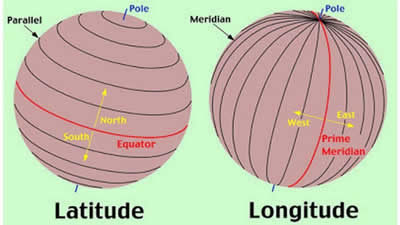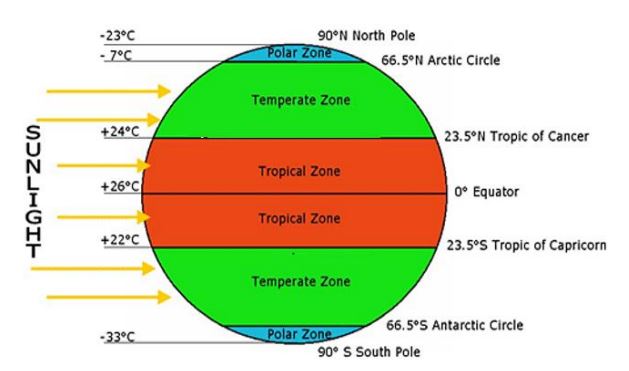LETS LEARN ABOUT LINES OF LONGITUDE AND LATITUDES IT IS IMPORTANT TO UNDERSTAND CLIMATIC ZONES
What Are Lines of Longitude and Latitude?

📍 Latitude Lines (also called Parallels)
- Latitude lines are used to help determine the temperature of a place
- Run east to west around the Earth.
- Measure how far north or south a place is from the Equator (0° latitude).
- They are parallel to each other and never meet.
- The Equator is the longest latitude line and divides the Earth into the Northern and Southern Hemispheres.
📍 Longitude Lines (also called Meridians)
- Longitude lines can be used to tell the time of a place
- Run north to south, from the North Pole to the South Pole.
- Measure how far east or west a place is from the Prime Meridian (0° longitude), which passes through Greenwich, England.
- Longitude lines meet at the poles and are not parallel.
🌍 Used Together
- Where a latitude and longitude line cross, they create a coordinate.
- That coordinate pinpoints an exact location on a map or globe.
Which jobs and careers use these lines of longitude and latitude ?
1. Pilots use coordinates (latitude and longitude) for flight planning, tracking aircraft
2. Ship Captains rely on longitude and latitude to chart sea routes, determine ship positions, and avoid obstacles.
3. Meteorologists use latitude and longitude to track weather patterns, issue warnings, and study how location affects climate and storms
4. The military uses geolocation for mission planning, satellite targeting, and coordination of troops or equipment.
lines of latitudes and Climatic zones

The main lines of latitude that mark these zones are:
1. The Equator (0° latitude)
Divides the Earth into the Northern and Southern Hemispheres.
Regions near the Equator are in the tropical zone, which is hot and humid year-round.
2. The Tropic of Cancer (23½° North)
It separates the tropical zone from the North temperate zone.
3. The Tropic of Capricorn (23½° South)
It separates the tropical zone from the South temperate zone
4. The Arctic Circle (66½° North)
Begins the polar zone in the Northern Hemisphere. It separates the North Temperate zone from the North polar zone
5. The Antarctic Circle (66½° South)
Begins the polar zone in the Southern Hemisphere. It separates the South Temperate zone from the South Temperate zone .
Life in the Climatic Zones
tropical zone
Tropical Zone: Found between the Tropic of Cancer (23.5°N) and the Tropic of Capricorn
(23.5°S). This zone includes places near the equator, such as parts of South America, Africa,
Southeast Asia, and the Caribbean.
Tropical Zone:
- Climate: Warm or hot throughout the year, with high humidity and heavy rainfall in
some areas. - Food: Fruits such as bananas, mangoes, and coconuts, as well as rice, yams are grown in
the tropical zone. - Clothing: Lightweight clothing is worn because of the heat. Cotton and light fabrics are
common. - Housing: Houses are usually built with materials like wood or bamboo, and may be
designed to allow air to flow through to keep them cool. Some houses are raised on stilts
to avoid flooding. - Activities: Farming (rice, sugarcane, and tropical fruits) and fishing are common
activities. People also engage in tourism and outdoor sports.